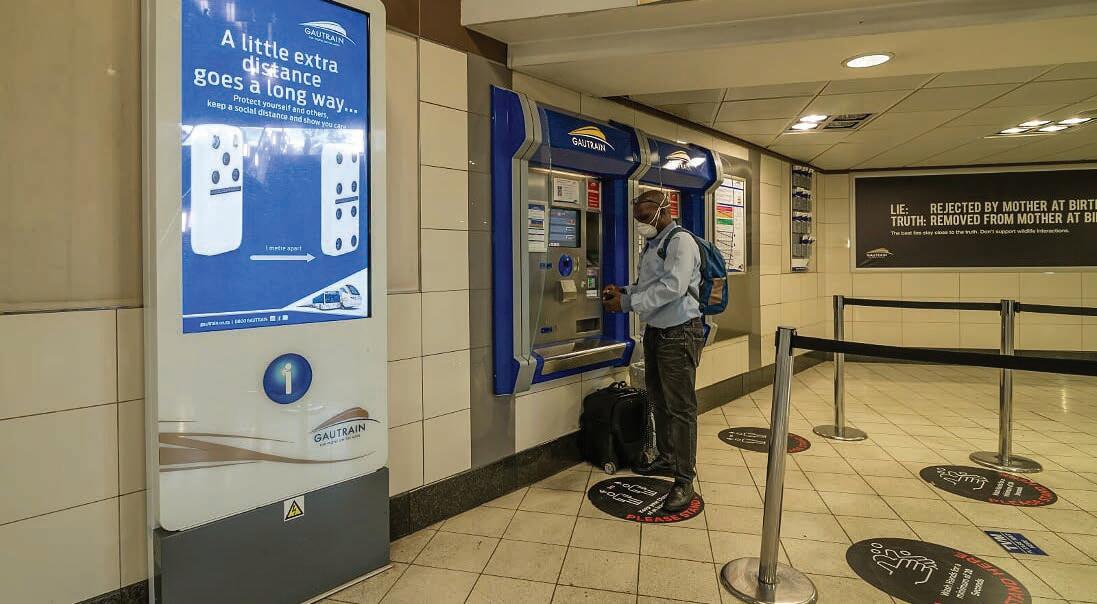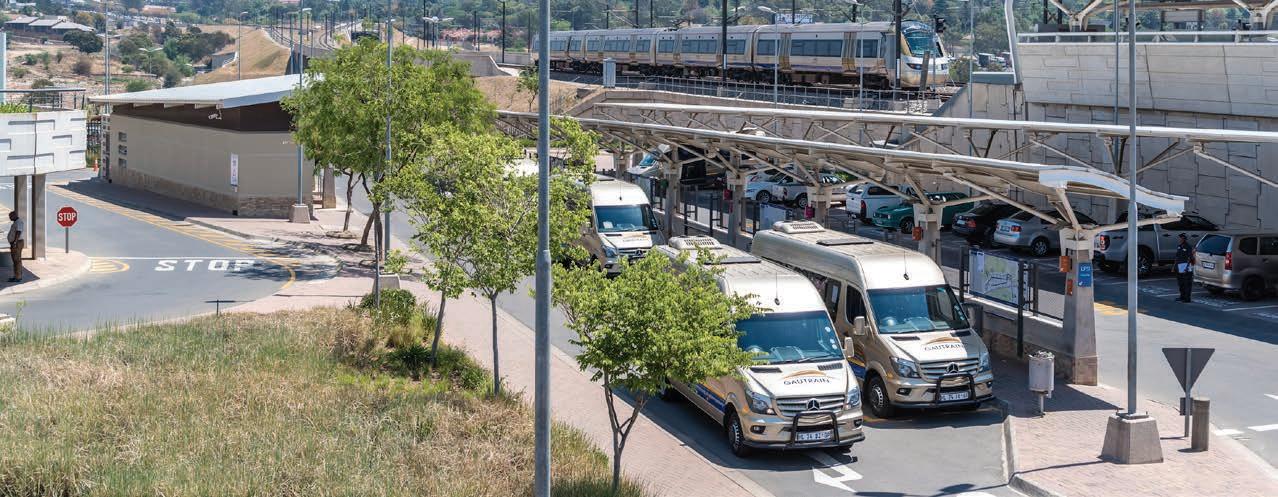
4 minute read
A ‘smart mobility’ anchor for Gauteng
Smart mobility is an innovative way of getting around. It’s about using technology to respond to the many and varied needs of the modern commuter. these include the demand for convenience, access to always-on information, a high techadoption rate, time and cost savings, as well as increasing environmental consciousness with various benefits.
Smart mobility promotes sustainable mobility and is coupled with numerous urban, social, economic and environmental benefits.
Advertisement
Here is a list of smart mobility focus areas and how Gautrain contributes to each one:
Smarter
Gautrain uses smart technology. Among its various technological service offerings, Gautrain offers its passengers the opportunity to use their credit or debit cards to tag in and out of stations, buses and parking facilities. this means they no longer need a Gautrain card. this “tap and go” technology is the first phase of a broader “smart ticketing” plan that will extend to other public transport modes, with incentives such as inter-operator discounts or rebates.
Cleaner
Gautrain contributes significantly to the green economy. It is currently pursuing a sustainable urban mobility plan, includes procuring new buses with integrated chasses that will make it possible to convert them to run on electric, hydrogen or hybrid power.
Investigations are also underway into using and even producing hydrogen to power Gautrain buses – a far cleaner fuel option than diesel. Passengers may soon be able to charge their electric or hybrid cars at Gautrain stations, which will also be retrofitted with solar panels to offset their power requirements. this green mobility plan will also help commuters offset their individual carbon footprint.

Safe and efficient
travelling by rail is one of the safest modes of transport available. furthermore, since its inception as a smart public transport mode, Gautrain has maintained high levels of operational efficiency. the train service operations achieved an average availability of 99.66% and punctuality of 98.11% over the last year. this was backed by excellent personal and property safety and security within the system, keeping incidents below a 1% level. Safety and security targets for Gautrain passengers are met through its security enhancement plans.
Integrated
Currently 70% of trips on Gautrain cross a city boundary linking important attractions, facilities and services across the region. Gautrain allows people to access these quickly, efficiently and safely. evidence demonstrates that integrated, multimodal transport systems deliver several benefits.

These include increased patronage from mode shift, more reliable and faster journeys resulting in time savings, time savings on business-related trips translating into increased productivity and more efficient use of existing resources, and travel savings.
Social and economic benefits
the rollout of the full Gauteng rapid rail Integrated Network (GRRIN) extensions will give workers more access to employment opportunities. It is projected that Phase 1 of the extensions will create almost 29 000 jobs during construction and an additional 7 729 long-term jobs at the start of the operational phase.
Phase 1 is also expected to see about R388 million invested in skills development during the construction phase, and a further R29 million during operations. the economic benefits arising from the construction and operation of GRRIN Phase 1 are estimated at a total present value of R33 billion.
Spatial development benefits
The ability of transport infrastructure to positively influence spatial structuring has been a unique feature of investments in transport. Land use changes occur as market forces influence how property is use and optimised for purpose. This in turn could lead to increases in values, rents and therefore, rateable income.
A key feature of urban spatial transformation is densification in nodal development areas and precincts, and intensification along rail corridors.
The first indicator of this spatial transformation is the increased demand for residential propertysurrounding stations. This increases the rates revenue of municipalities and reduces the cost of providing basic services. Studies done by the Financial and Fiscal Commission showed that “compact cities are considerably more efficient than the current sprawling form of South African cities, with savings to the state, households and the environment”.
About 59% of all office development activity in major South African nodes is located around Gautrain stations. In this way, Gautrain is making a significant contribution to creating a larger and more economically powerful Gauteng region.
Environmental benefits
Compared to road transport, rail provides lower carbon transport solutions and therefore promotes a greener Gauteng. The Department of Transport’s Green Transport Strategy builds on the Department of Environmental Affairs’ 2014 Mitigation Report. This provides estimates of the potential carbon dioxide (CO2) emissions reductions that can be achieved through modal shifts in the transport sector, and the estimated costs of achieving these reductions per ton of avoided CO2 emissions.
While the initial capital costs are high (about R3 000 per tonne of carbon dioxide saved), by 2050 these investments are expected to provide a return of more than R1 000 per tonne of CO2 saved, with up to 9 000 kilotonnes of CO2 saved through the shift from private vehicles to passenger rail. These environmental benefits also translate into health benefits, particularly those relating to respiratory health.




